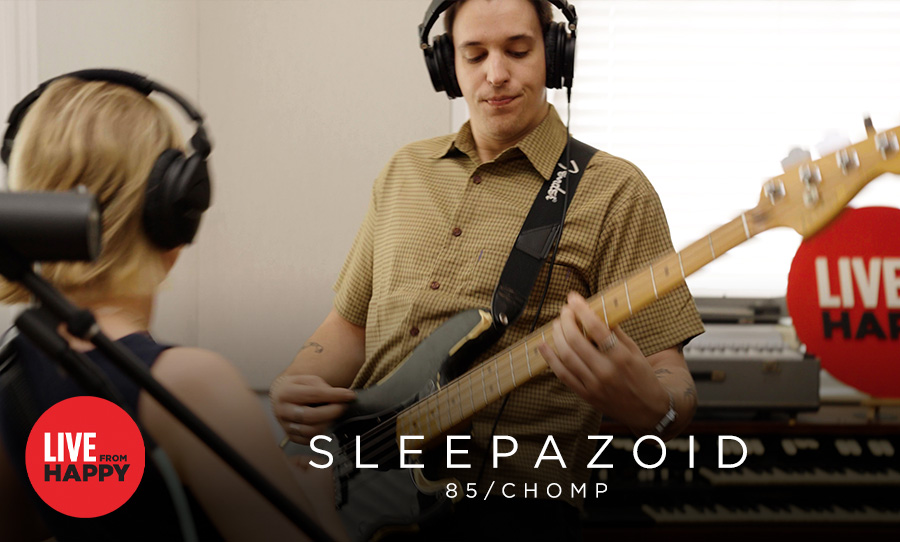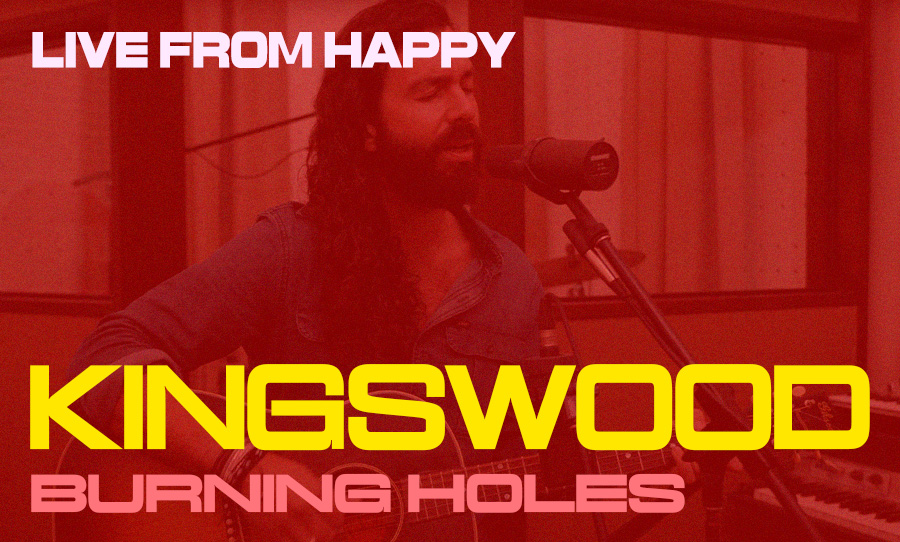Have you ever noticed the architectural style of your local? It’s easy to take the design of our pubs for granted, but there is rich vein of continuity that the runs through many of our favourite watering holes. Australian Art Deco Hotels is award-winning designer and photographer Geoffrey Goddard’s examination of the decidedly elegant style of interwar period pubs.
From the heart of Sydney, across the Nullarbor and everywhere in between, the Art Deco architectural style left an indelible aesthetic imprint on our local communities. Goddard’s photographic chronicle gives us a chance to luxuriate in this gauzy nostalgia.
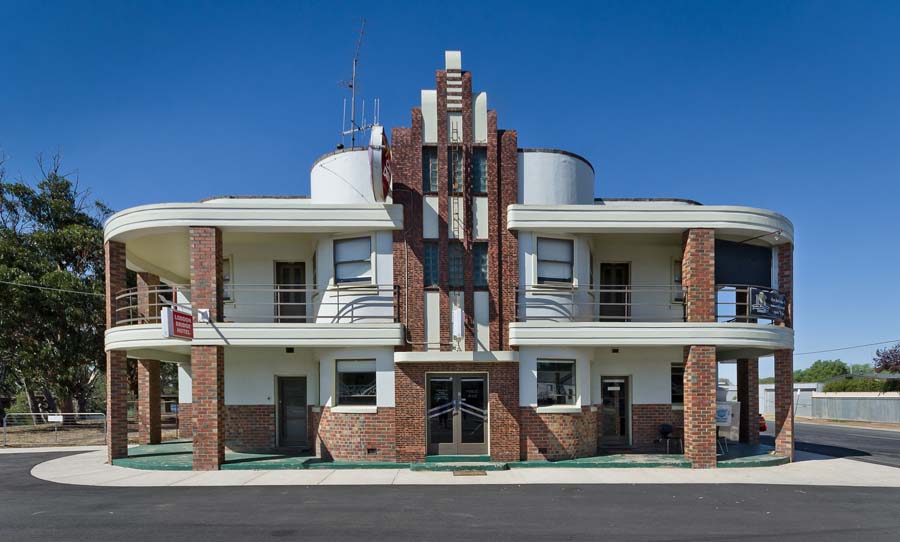
Australian Art Deco Hotels is Geoffrey Goddard’s photographic celebration of a golden age in architecture, showing our locals in a new light.
Depending on where you live, you might notice the thread that runs through the local architecture. In some suburbs, you’d be forgiven for thinking that all the buildings appeared overnight – which they basically did.
Late Victorian inner-city terraces, the Federation houses that spread throughout the suburbs, the post-war fibro houses that were flung out further still – these movements happened in waves. The period between 1934 and 1942 saw hundreds of Art Deco hotels erected in urban hotspots and country outposts across the nation.
As could be expected, the explosion of Art Deco pubs was born from a confluence of commercial imperatives and happenings beyond the control of any individual. Goddard notes:
“The early part of the 20th century saw a consolidation of Australian breweries that by the early 1930s had led to a competitive drive to promote their beers to consumers.”
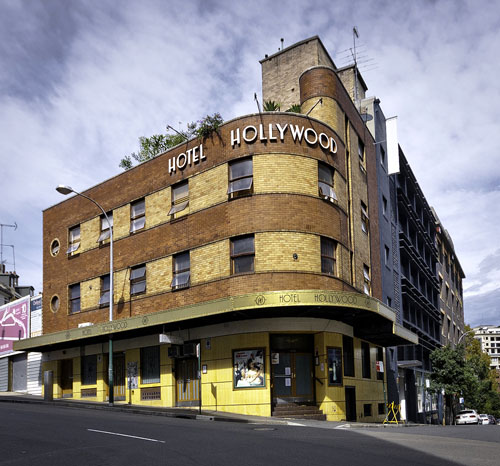
The breweries – some of which are commercial juggernauts today – were beginning to muscle up. And because the retail takeaway liquor industry was not yet established, alcohol was mainly consumed in pubs. Thus, the hotels of Australia needed to attract as many eyeballs and thirsty patrons as possible and breweries either wanted to radically renovate their existing buildings, or create gleaming new structures from scratch.
The breweries were also in a race against time. The Second World War was fast approaching and rationing of all kinds, including building materials, was sure to bite. These pubs needed to get built in a hurry, or they would lose their competitive edge.
So why this particular style? Aside from the fact that this was a cutting edge trend that emanated from Europe and America, it served a functional purpose facilitating the “six o’clock swill”. Goddard explains:
“The long front bar for example, of curved and horseshoe in shape, was designed so that hotels could accommodate as many drinkers as possible with access to the bar at any one time.”
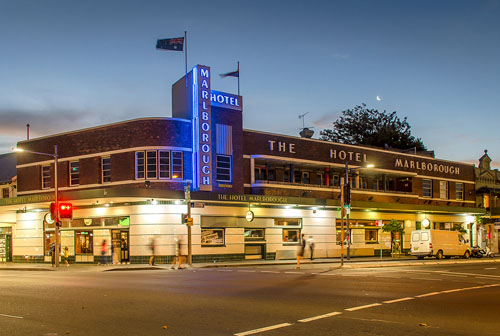
It’s hard to imagine pubs shutting at 6pm, but this was the reality for patrons in the early 2oth century, a state of affairs that was mainly brought on by the various Temperance leagues around the country to curb alcohol consumption.
In effect, it just meant that workers would consume a night’s worth of alcohol in the hour between knockoff and the 6pm mandatory closing time. The long, luxurious bars that we know and love today (lined in chrome and surrounded by glazed tiles) had a very real and practical purpose in their infancy: maximum efficiency in the delivery of beer.
But it’s the photos of the outside of these buildings that steal the show. Their juxtaposition of sweeping curves and intricately patterned brickwork would feel out of place amongst the modern landscape if they weren’t so ubiquitous. Some are better preserved than others and many retain their original minimal, geometric type faces. Others have gone through cosmetic adjustments throughout the decades, with varying degrees of success.
There’s also a special treat for Sydneysiders. Goddard has mapped out a three walks that explore the districts that are especially flush with Art Deco pubs – the Eastern Suburbs route traces a line down Oxford Street, ending in Waverley. The City route kicks off at Broadway and sends you into the CBD and the Inner West route takes you on a trip via the Marly, heading down King Street, wrapping up at the Golden Barley. It just shows you how accessible all these architectural gems are.
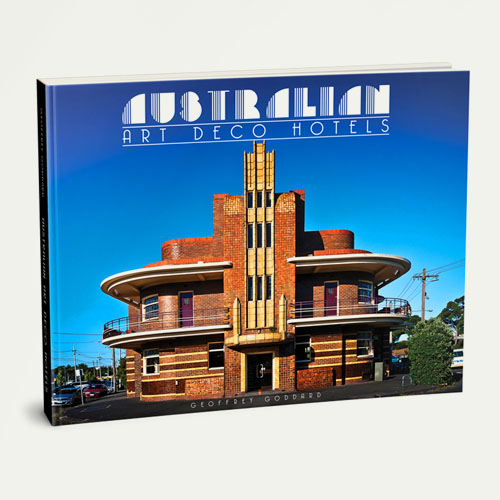
More than anything, Goddard’s book encourages you to view your own neighbourhood from a fresh perspective, and couches these buildings in a fascinating historical context. This uniquely Australian phenomenon that swept through the nation in the 1930s is beautifully encapsulated within these pages.
Australian Art Deco Hotels is out now via Geoffrey Goddard’s website, Kinokuniya, Better Read Than Dead, The State Library Bookshop and Melbourne’s Hill of Content. You can see more of the project on Instagram @australianartdecohotels.
